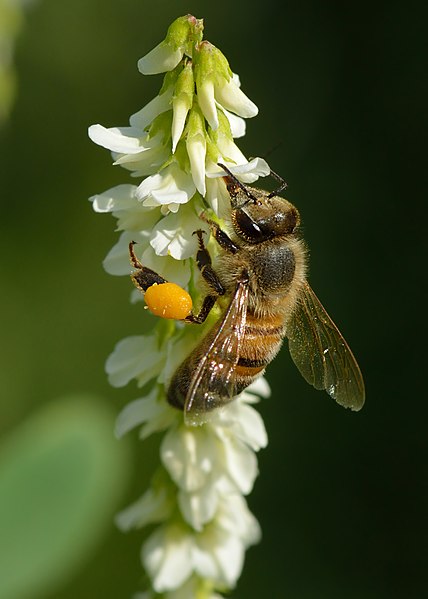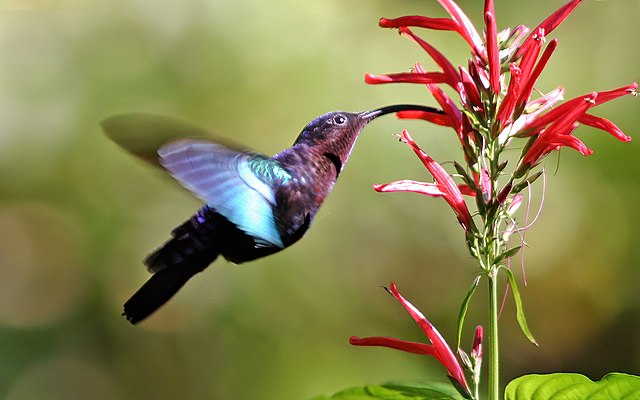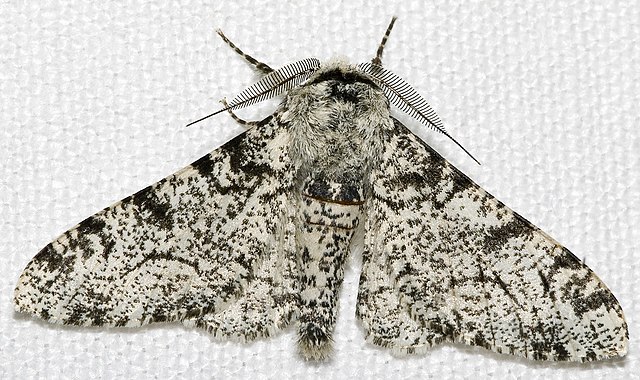In biology, coevolution occurs when two or more species reciprocally affect each other's evolution through the process of natural selection. The term sometimes is used for two traits in the same species affecting each other's evolution, as well as gene-culture coevolution.
The pollinating wasp Dasyscolia ciliata in pseudocopulation with a flower of Ophrys speculum
Honey bee taking a reward of nectar and collecting pollen in its pollen baskets from white melilot flowers
Purple-throated carib feeding from and pollinating a flower
A fig exposing its many tiny matured, seed-bearing gynoecia. These are pollinated by the fig wasp, Blastophaga psenes. In the cultivated fig, there are also asexual varieties.
Evolution is the change in the heritable characteristics of biological populations over successive generations. It occurs when evolutionary processes such as natural selection and genetic drift act on genetic variation, resulting in certain characteristics becoming more or less common within a population over successive generations. The process of evolution has given rise to biodiversity at every level of biological organisation.
White peppered moth
Black morph in peppered moth evolution
Male moor frogs become blue during the height of mating season. Blue reflectance may be a form of intersexual communication. It is hypothesised that males with brighter blue coloration may signal greater sexual and genetic fitness.
The common garter snake has evolved resistance to the defensive substance tetrodotoxin in its amphibian prey.








